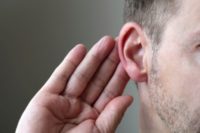Most employers are aware that occupational noise has the potential to cause permanent hearing loss in exposed workers. Less well known, and less studied, is the link between occupational noise exposure and tinnitus.
A study from NIOSH looks at both conditions, teasing out their individual prevalence, how often they occur together, and how they are connected to occupational noise exposure.
Noise-induced hearing loss is the most widely known and well understood effect of occupational noise exposure, but other effects, like increased stress and cardiovascular issues, are less well defined.
Tinnitus, or “ringing in the ears,” is another condition known to be connected to noise exposure but without much detail. It’s different from hearing loss, although the two conditions sometimes occur together.
Rather than diminished hearing, tinnitus is sound that is perceived in one or both ears even when the environment has no source of sound. It can disrupt sleep and concentration, increasing fatigue, reducing alertness, and degrading performance—all factors that can lead to accidents, both on and off the job.
The NIOSH study is the first to look at occupationally induced tinnitus. Before this study was published, there were no reliable estimates of how common tinnitus was in the workplace.
NIOSH used the 2007 National Health Interview Survey (NHIS)—which includes detailed self-reported information from workers on hearing difficulty, tinnitus, and exposures to occupational noise—to generate its estimates. According to the NHIS data, the incidence of hearing difficulty among workers who had never been exposed to occupational noise was seven percent.
In that same group, five percent reported tinnitus, and two percent reported having both conditions.
Among workers who had at any point in their working life been exposed to occupational noise, the incidence of both conditions was much higher: 23 percent reported hearing difficulty, 15 percent reported tinnitus, and 9 percent reported both.
Highest risk industries
The risk of tinnitus varies by industry. Workers were at increased risk if they had ever held jobs in:
- Agriculture, forestry, fishing, and hunting. These workers had a significantly increased risk of hearing difficulty, tinnitus, and their co-occurrence.
- Manufacturing. These workers also had significantly higher risk for hearing difficulty, tinnitus, and the co-occurrence.
- Life, physical and social sciences, and personal care and service occupations. These workers were at significantly higher risk of hearing difficulty.
- Architecture and engineering. These workers had a significantly increased risk of tinnitus.
One set of workers was at a reduced risk. Workers in sales and related occupations had significantly lower chance of developing hearing difficulty, tinnitus or both.
Source: NIOSH









